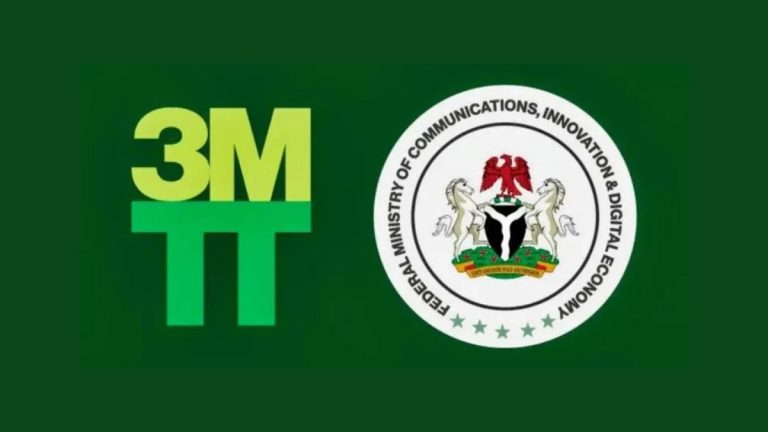
The rapid evolution of the digital economy has sparked a growing demand for skilled labour across the globe. In Africa, where youth unemployment remains a pressing challenge, digital employment initiatives present a transformative opportunity to bridge the gap between economic potential and workforce readiness. One such initiative, Nigeria’s 3 Million Tech Talents (3MTT) programme, offers a compelling example of how structured interventions can generate value for individuals, businesses, and society. In this piece, our analyst examines the business model underpinning 3MTT and its potential as a blueprint for scaling digital employment across Africa.
A Youth-Focused Value Proposition
At its core, the 3MTT programme seeks to tackle Nigeria’s youth unemployment crisis by equipping young people with in-demand digital skills. With youth comprising over 60% of Nigeria’s population, empowering this demographic is critical to achieving economic growth and stability. The programme’s value proposition is clear: it provides affordable, market-relevant training to prepare participants for employment in freelancing, remote work, and entrepreneurship.
For employers, 3MTT offers access to a pool of job-ready talent skilled in areas like web development, digital marketing, and data analysis. The initiative aligns seamlessly with the interests of local and international businesses that seek to tap into Nigeria’s youthful energy and digital savviness. Also, stakeholders such as government agencies, NGOs, and international organizations benefit from the programme’s contributions to job creation, economic diversification, and social stability.
Register for Tekedia Mini-MBA edition 19 (Feb 9 – May 2, 2026): big discounts for early bird.
Tekedia AI in Business Masterclass opens registrations.
Join Tekedia Capital Syndicate and co-invest in great global startups.
Register for Tekedia AI Lab: From Technical Design to Deployment (next edition begins Jan 24 2026).
Customer Segments: More Than Just the Youth
The 3MTT programme primarily targets young Nigerians aged 18–35, who are eager to leverage digital skills for economic empowerment. However, its customer segments extend beyond this primary audience. Employers, both local and global, represent a secondary segment that drives the demand for skilled workers. Government and development partners make up a tertiary segment, as they provide the financial and institutional support necessary for scaling the programme.
Digital Channels for Delivery
In today’s interconnected world, digital platforms are indispensable for delivering scalable solutions. The 3MTT programme leverages a mix of channels, including an e-learning portal, mobile applications, and social media, to reach its participants. Online tools provide training, track progress, and connect participants to job opportunities. Additionally, physical training centres and hubs serve as venues for in-person workshops, bridging the digital divide for individuals with limited internet access.
Through these channels, the programme not only ensures wide accessibility but also fosters participation and interactivity. This approach enhances learning outcomes and prepares participants for real-world challenges in the digital economy.
Revenue Streams: Sustainability Through Diversification
One of the standout features of 3MTT’s business model is its diversified revenue streams, which ensure the programme’s financial sustainability. Training fees constitute a primary revenue source, with subsidies available for participants from low-income backgrounds. Placement fees from employers who hire graduates add another income stream, creating a mutually beneficial relationship between job seekers and recruiters.
Beyond this, the programme secures sponsorships and grants from development agencies, government bodies, and private-sector partners. Collaborations with technology companies, for example, enable the programme to offer co-branded certifications and tools. These diversified streams not only sustain operations but also provide resources for scaling and innovation.
Key Partnerships and Resources
The success of 3MTT hinges on its key partnerships with stakeholders across sectors. Technology firms such as Microsoft, Google, and Amazon contribute tools, certifications, and expertise to the curriculum. Government ministries and agencies provide policy support, funding, and infrastructure. Employers play a critical role by articulating the skills they require and offering internships and jobs to graduates.
To implement its ambitious goals, 3MTT relies on a robust mix of key resources, including trainers, curriculum developers, and digital platforms. These resources form the backbone of the programme, enabling it to deliver high-quality, scalable training to thousands of participants.
Cost Structure: Efficiency Without Compromise
Operating a programme as expansive as 3MTT involves significant costs. These include fixed expenses such as salaries for trainers and administrators, as well as platform development and marketing. Variable costs, including training materials and venue rentals, scale with the programme’s reach. By maintaining efficiency in resource allocation, 3MTT ensures that its operations remain financially sustainable while delivering maximum impact.
A Scalable Model for Africa
The business model of 3MTT offers valuable lessons for other African nations looking to implement similar initiatives. Africa is home to the world’s youngest population, with over 200 million people aged 15–24. However, unemployment and underemployment plague this demographic, limiting their contributions to economic growth.
Replicating the 3MTT model across the continent could transform Africa into a global hub for digital talent. Countries like Kenya, Ghana, and South Africa, which already have burgeoning tech ecosystems, are well-positioned to adopt and adapt this model. By tailoring it to local contexts, these nations can unlock new opportunities for their youth while addressing regional skills gaps.



